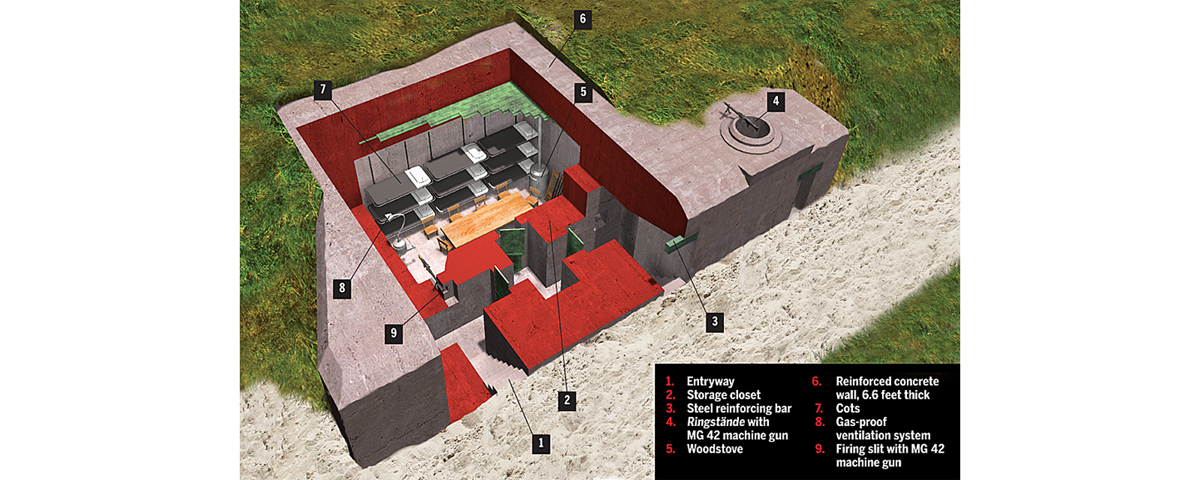In August 1942 Adolf Hitler gave serious consideration to fortifying the entire 2,400-mile coastline of his Western European conquests from Spain to Norway, a decision bolstered by the albeit failed Allied raid on Dieppe on the 19th of that month. But as his primary focus remained on the Eastern Front, German construction crews were instead ordered to prepare coastal fortifications as force multipliers for the minimum personnel necessary. To protect those troops from Allied bombs and shells, crews installed more than 1,000 R621 personnel bunkers, or Gruppenstand, along the Atlantic Wall.
Accommodating 10 soldiers (at least one of whom was always on guard), each bunker comprised more than 17,000 cubic feet of concrete, 25 tons of steel bars and 4 tons of other steel reinforcement, all sunk flush with the ground on the reverse side of coastal dunes, with a berm or wall to protect entryways from direct fire. Access to the entryways was through a trench. Flanking each door was a firing slit for a machine gun. Each bunker also featured one or two Ringstände, circular firing pits often capped by the turrets of obsolete tanks; the Allies called them tobruks, as they’d first encountered such structures during the fighting in North Africa.
The spartan main room was 19 by 11½ feet and furnished with a table and chair, a woodstove and three rows of suspended cots stacked three high along the rear wall, with storage options for weapons and gear. A closed ventilation system and filters enabled survival in the event the enemy resorted to chemical weapons. Among other variations, the R622 Doppelgruppenstand accommodated 20 troops. These two types accounted for roughly one-third of all bombproof fortifications along the Atlantic Wall. MH





